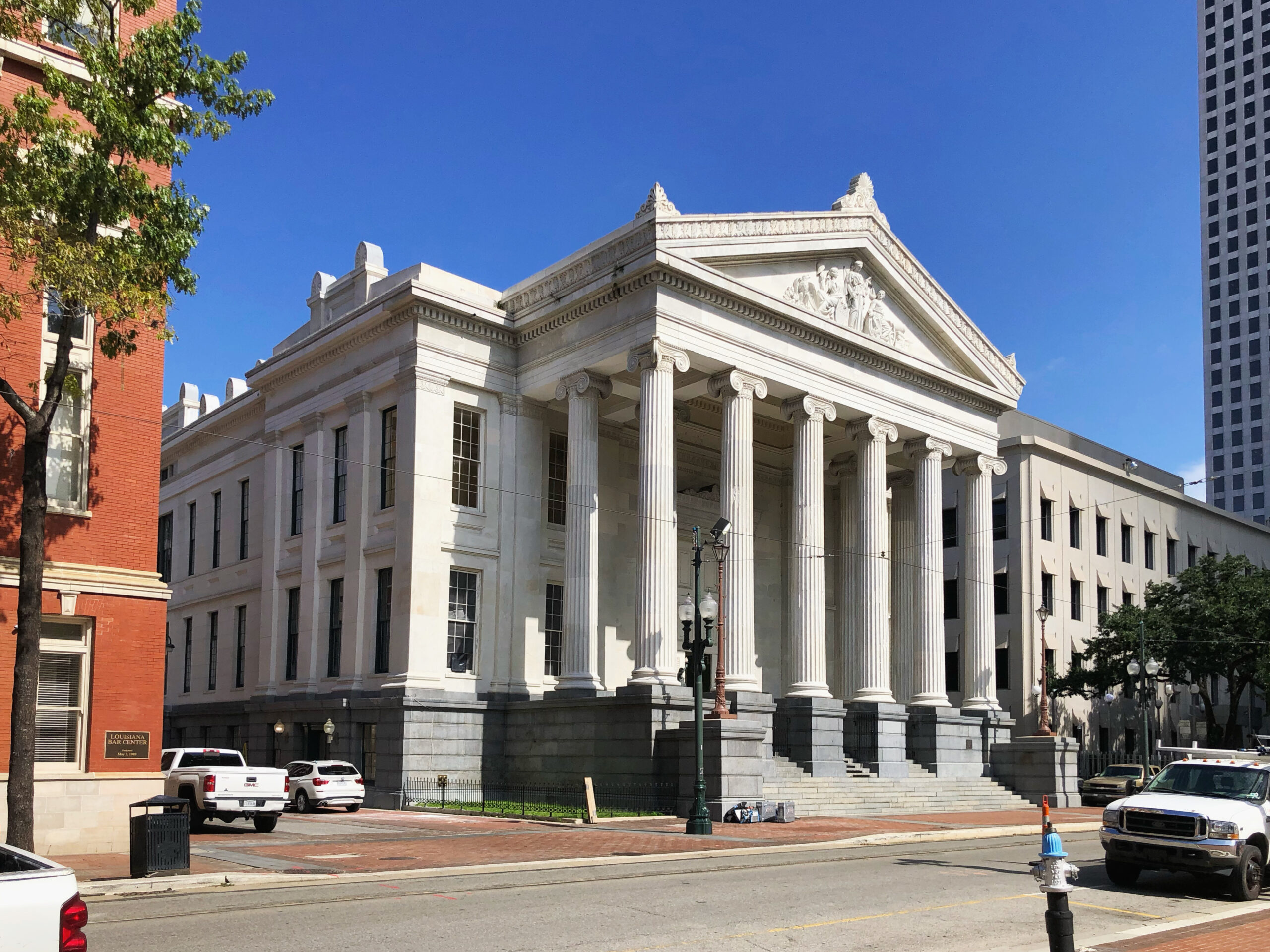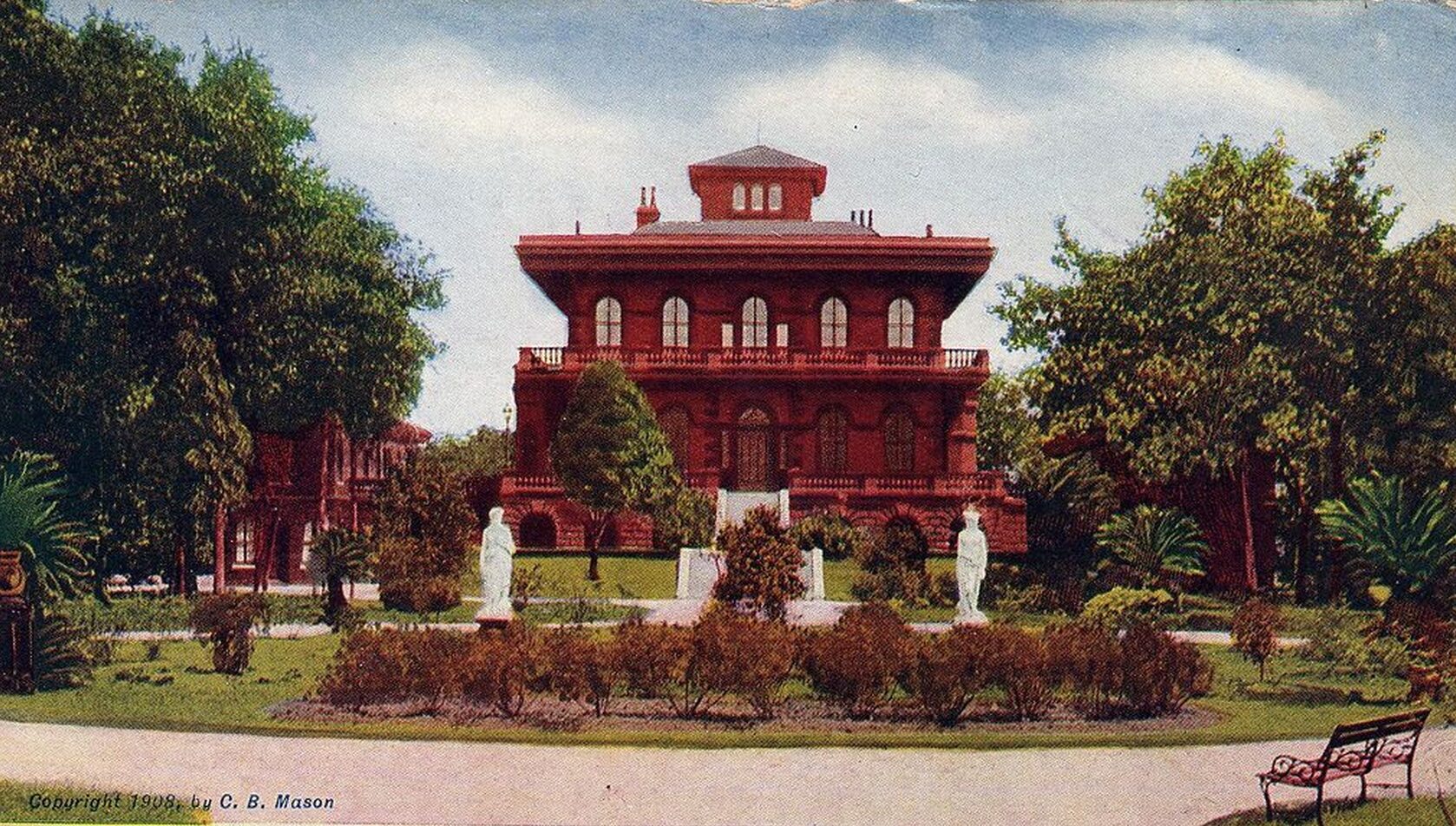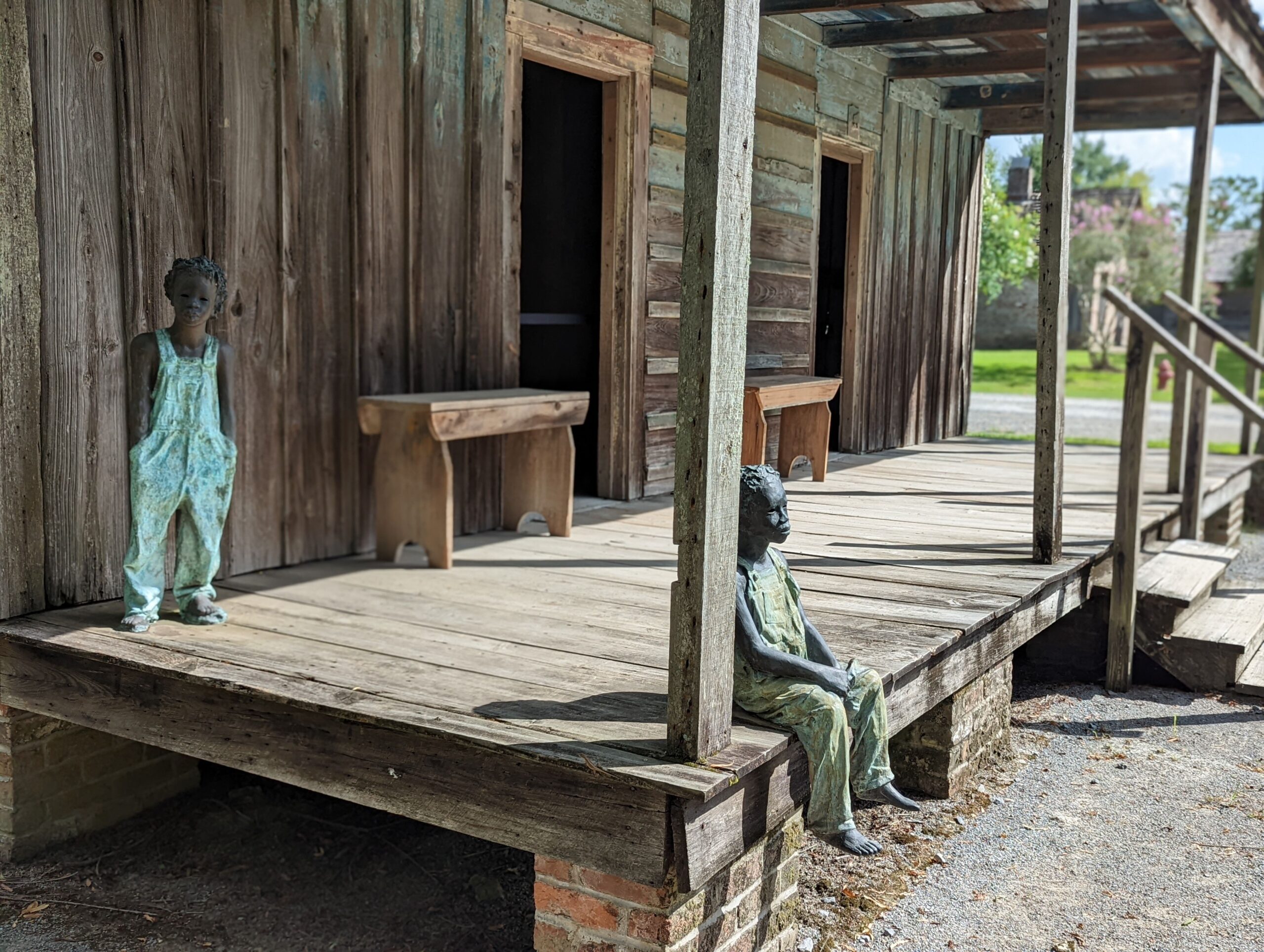This story appeared in the April/May issue of PRC’s Preservation in Print magazine. Interested in getting more preservation stories like this delivered to your door? Become a member of the PRC for a subscription!
When Gallier Hall was dedicated on May 10, 1853, the grand structure brought a fractured city government under one roof at a time when deep cultural tensions divided the city’s population. After a century of serving as New Orleans’ City Hall, the Greek Revival-style jewel survived a threat of demolition to become the city’s premier site to host international dignitaries for special events and Carnival celebrations.
Today, the beloved landmark is mostly used for private events, but its doors will open to the public on May 20 to celebrate its 170th birthday with an open house.
The building is “the best surviving example of Greek Revival architecture in a city that once had more monumental Grecian specimens than ancient Athens in its prime, and an outstanding example nationally,” according to New Orleans Architecture Volume II, The American Sector, published by the Friends of the Cabildo. Prolific architect James Gallier Sr. designed the temple-like building, and the site was named a National Historic Landmark in 1974. Its Tuckahoe marble portico frames the front facade and soars above St. Charles Avenue. Fluted columns, dentils, an ornate anthemion-topped cornice, and relief sculptures depicting Liberty, Justice and Commerce accentuate the building’s classical façade.
The structure was built between 1845 and 1850 to be the headquarters of New Orleans’ Second Municipality, then known as the American Sector, when tensions between cultural, lingual and ethnic groups divided city governance into three semi-autonomous districts. After the city reunified in 1852, the new Gallier Hall — located in the English-speaking municipality — became the location of a unified City Hall upon its dedication in 1853.
As City Hall, its walls have borne witness to some of the most critical points in the city’s history, from New Orleans’ surrender to Union troops during the Civil War to the hosting of American presidents and Carnival royalty. After City Hall moved to its current Duncan Plaza location in 1958, the building was proposed for demolition, but preservationists with the Louisiana Landmarks Society advocated saving the structure from the wrecking ball. Although it escaped demolition, the building’s condition declined during the second half of the 20th century.
Gallier Hall underwent a major stabilization project in 2016 — undertaken after a large piece of the marble facade came crashing down to the sidewalk — and an extensive multi-year interior renovation project. Its interior renovations were guided by the Gallier Hall Preservation Committee, led by Cheryl Landrieu, wife of then-Mayor Mitch Landrieu, and completed in 2018 in time for the city’s Tricentennial celebrations. The city-owned building has been a popular venue for public and private events since the restoration, with proceeds from event rentals dedicated to a fund for building maintenance and equipment.
“As we celebrate the 170th Anniversary of Gallier Hall, we are grateful for the work that Cheryl Landrieu and the preservation committee did to restore this crown jewel of the City of New Orleans,” said Bryon Cornelison, deputy director of programs with the Mayor’s Office of Cultural Economy. “We continue to invest both public and private dollars into Gallier with the completion of restoration of the fourth floor and ongoing maintenance and upkeep through dedicated funding.”
Since that major renovation, additional maintenance projects of the large historic structure have been an ongoing priority. Historic furnishings inside the building have been restored. Bevolo Gas and Electric Lights — a local company that has hand-crafted gas lights from its French Quarter workshop since 1945 — recently restored the exterior lamps on the St. Charles Avenue entrance of the building. The lamp restoration project was paid for by Universal Studios during the recent filming of “Renfield.” New lamps for the Lafayette Street side of the building are currently being manufactured.
On the fourth floor, historic wood floors have been refinished, new lighting has been installed, paint has been touched up, and a new kitchen has been installed. The floor is home to the Mayor’s Office of Cultural Economy. To mark the building’s 170th year, the office acquired a painting by local artist Becky Fos of Gallier Hall aglow with color during Luna Fête, a popular annual festival that maps artistic projections and animations onto the historic building’s facade.
The public will have the chance to see some of the building’s recent renovations and learn more about its noteworthy history during a day of open house tours on May 20, from 10 a.m. to 5 p.m. For additional updates, visit Gallierhall.com.
Davis “Dee” Allen is PRC’s Communications Associate and a staff writer for Preservation in Print.






